British Geological Survey
Type of resources
Available actions
Topics
Keywords
Contact for the resource
Provided by
Years
Formats
Representation types
Update frequencies
Service types
Scale
Resolution
-
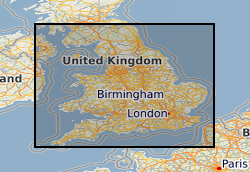
A card index storing supplementary information regarding name, operator, dates and commodity worked for each planning permission boundary recorded (drawn) on the Ministry of Housing and Local Government (MHLG) Mineral Planning Permissions Maps (see associated metadata). Information on the cards has been used to attribute the Ministry of Housing and Local Government (MHLG) Mineral Planning Permission Polygons (see associated metadata for MHLG Planning Permission Polygons).
-
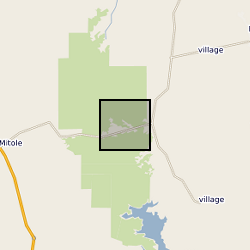
Data from Tanzania Drilling Project Core Site 14 B. Data spans the Paleocene Eocene Thermal Maximum ~56 million years ago. Data includes: bulk sediment geochemistry, BIT index and GDGT data, n-alkane d13C data, single specimen planktonic foraminifera stable isotope data and planktonic foraminifera count data. Geographic location 9°16'59.89"S, 39°30'45.04"E
-
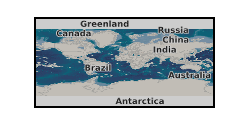
The data consists of an extended abstract submitted to the '8th Trondheim Conference on CO2 Capture, Transport and Storage', Trondheim, Norway, 16-18th June 2015. The abstract describes work carried-out on behalf of the 'Fault seal controls on CO2 storage capacity in aquifers' project funded by the UKCCS Research Centre, grant number UKCCSRC-C1-14. The Captain Sandstone saline aquifer has a potential to store large volumes of CO2 as part of greenhouse gas mitigation strategies, however it is known to be affected by regional faults, some of which extend to the seabed. An in situ stress analysis is performed in order to deduce the stresses affecting these faults and to assess their geomechanical stability.
-

These maps are based on the Ordnance Survey 'Old Series' One-Inch maps of England and Wales. They were the first 1:63 360 geological map series produced by the Geological Survey in England and Wales. Sheets were initially published as full sheets, and later as quarter sheets (NW, NE, SW, SE). Earlier maps are hand-coloured, later maps are colour-printed. The maps show both solid and drift geology. The OS 'Old Series' maps extended as far north as a line drawn between Preston and the Humber. To the north of this, the maps use the same sheetlines as the 1:63 360 New Series, and carry two sheet numbers, which refer to the Old Series (91-110) and New Series (1-73) numbering. These maps are common to both series. A sheet that covers the Isle of Man is also included in the series. Geological maps represent a geologist's compiled interpretation of the geology of an area. A geologist will consider the data available at the time, including measurements and observations collected during field campaigns, as well as their knowledge of geological processes and the geological context to create a model of the geology of an area. This model is then fitted to a topographic basemap and drawn up at the appropriate scale, with generalization if necessary, to create a geological map, which is a representation of the geological model. Explanatory notes and vertical and horizontal cross sections may be published with the map. Geological maps may be created to show various aspects of the geology, or themes. These maps are hard-copy paper records stored in the National Geoscience Data Centre (NGDC) and are delivered as digital scans through the BGS website.
-

This dataset contains data from a marine geophysical and multibeam survey which took place in April 2012 in the area of Ardmucknish Bay on board the RV White Ribbon. This was a follow up survey to the previous work carried out in this area in 2011 (2011/4). QICS (Quantifying and monitoring potential ecosystem impacts of geological carbon storage) was a scientific research project funded by NERC; its purpose was to improve the understanding of the sensitivities of the UK marine environment to a potential leak from a carbon capture storage (CCS) system. The aim of the survey was to assess any affect the drilling of the borehole had on the underlying sediments. Sea floor bathymetry data were collected using a Kongsberg EM3002D multibeam system. Sub bottom seismic profiling data were collected using an Applied Acoustics surface tow boomer (STB). Technical details of the survey are contained in the BGS Report of Survey. Webpage www.bgs.ac.uk/QICS/. NERC Grant NE/H013954/1.
-

1. Grids (in spreadsheet form) of interpreted parameters from the 3D time-lapse seismics (temporal and constructed depth thicknesses) at the Sleipner CO2 storage operation in the North Sea. 2. A synthetic seismic model of a CO2 wedge, to examine the relationship between wedge true thickness and temporal thicknesses. These datasets underpin following publications: Chadwick, R.A., Williams, G.A. & White, J.C. 2016. High resolution imaging and characterisation of a CO2 layer at the Sleipner CO2 Storage operation using time-lapse seismics. First Break, 34, 79-87. The source data comprise the Sleipner 3D time-lapse surveys which were acquired in 1994 (baseline), 1999, 2001, 2002, 2004, 2006, 2008 and 2010. The dataset used here for measuring temporal thicknesses is the 2010 high resolution dataset with constructed depth thicknesses from the 1994 baseline data. Grant number: EP/K035878/1.
-
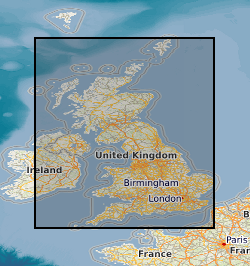
In 2011 the British Geological Survey (BGS) decided to begin the assembly of a National Geological Model (NGM) from its existing and on-going geological framework models , comprising integrated national crustal, bedrock and Quaternary models. The bedrock component is the most advanced of these themes and comprises both the calculated models and a complementary network of cross-sections that provide a fence diagram for the bedrock geology of Great Britain. This fence diagram, the GB3D_v2012 dataset is available in a variety of formats from the BGS website www.bgs.ac.uk as free downloads. It complements the existing 1:625 000 scale mapsheets published by BGS utilising the same colour schema and geological classification. The 121 component cross-sections extend to depths between 1.5 and 6 km; they have an aggregate length of over 20,000 km, and they are snapped together at their intersections to ensure total consistency. The sections are based on the existing BGS geological framework models where they cut through them, they also take account of the vast wealth of published data on the subsurface structure of Britain both from BGS and in the literature. Much of this is in the form of cross-sections, contour maps of surfaces, and thicknesses (isopachs). The fence diagram has been built in the Geological Surveying and Investigation in 3D (GSI3D) software. It is envisaged that this dataset will form a useful educational resource for geoscience students and the general public, and also provide the bedrock geology context and structure for regional and catchment scale studies. The fence diagram was built in 2009-12 using funding from the BGS National Capability Programme and the Environment Agency of England and Wales. 14 expert regional geologists compiled the sections.
-

An initial core scanning dataset from the TH0424 borehole that was drilled onshore at Thornton Science Park, Cheshire, UK as part of the UK Geoenergy Observatories (UKGEOS) Cheshire ground investigation funded by UKRI/NERC. The approximately 100 m long core succession comprises the Sherwood Sandstone Group. The core scanning dataset contains X-ray radiographic images and geophysical property data obtained using a Geotek rotating X-ray computed tomography (RXCT) core scanner and a Geotek multi-sensor core logger (MSCL-S) at the Core Scanning Facility (CSF) at the British Geological Survey (BGS).
-

Compiled by the Minerals Intelligence section of the Survey from 1918 to 1985. Comprises around 250,000 card entrys that refer to published articles on mineral topics world-wide.
-
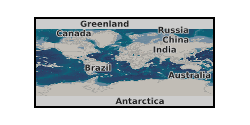
The data consists of a presentation presented at the UKCCSRC biannual meeting in Cranfield, April 20th 2015. The presentation describes an overview of work carried-out on behalf of the 'Fault seal controls on CO2 storage capacity in aquifers' project funded by the UKCCS Research Centre, grant number UKCCSRC-C1-14. Three main work strands are briefly described: 1) The Captain Sandstone aquifer is studied for the geomechanical integrity of faults, 2) Shallow gas accumulations in the Netherlands sector of the Southern North Sea provide an opportunity to study their coincidence with faulting while commonalities in the nature of the faults provide an indication of factors that might lead to fault leakage in CO2 storage sites. 3) The Fizzy gas field which is naturally rich in CO2 is studied for its fault seal potential as a natural analogue for fault-bounded storage sites.
 NERC Data Catalogue Service
NERC Data Catalogue Service